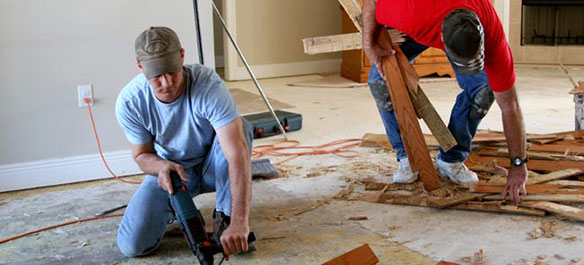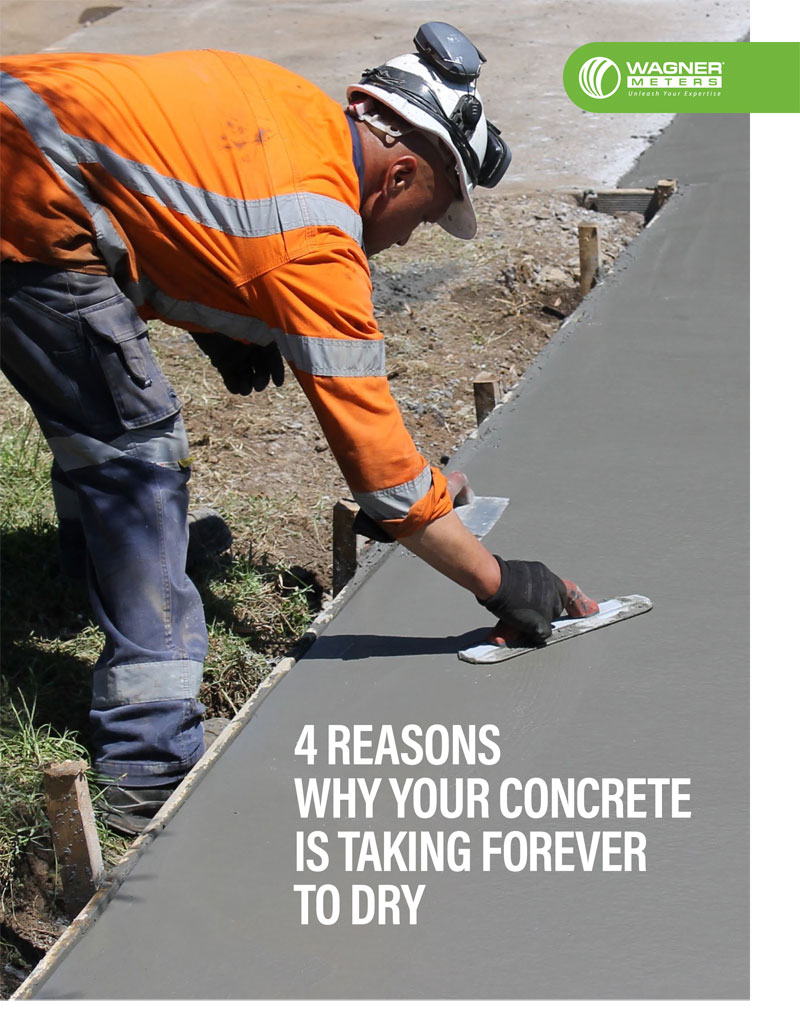Moisture Related Flooring Failure: How Bad Can It Be?

In any time-pressed building project, there are a number of judgment calls to be made regarding materials, scheduling and “bottom-line” decisions, and often the temptation is to trade time and budget for potential long-term liability issues. However, the stakes are higher than you might think when standing under a looming deadline. Prevention truly becomes the key to avoiding the costliest line item on your horizon as a flooring professional– a failed floor.
Moisture in Flooring Materials
There are a number of ways that moisture can be introduced to a flooring system– everything from leaking plumbing to a natural disaster. Obviously, repair and remediation in these instances will require extra levels of professional intervention. It is important to recognize the most subtle sources of moisture as well– the “natural” moisture in the concrete slab because ultimately, you as the installer might end up being responsible for its action.
It’s a simple observation but a critical one; all concrete slabs contain some level of moisture, and that moisture (which usually exists as water vapor) is not static. It interacts with the flooring material and also with its environment and all materials it contacts. From concrete slabs to tile work to wood flooring, having a basic understanding of how moisture interacts with, and between, these materials is foundational to a successful career in flooring.
It’s also vital in choosing which materials to use on the job site. Some materials have higher moisture tolerances than others. Some materials, or even climates, require more robust moisture mitigation measures. Some materials require increased time allowances for drying or acclimation. All of these factors are part of understanding the risk of a flooring failure.
Calculating the Cost
Calculating the actual financial risks of a potential flooring failure includes more than just echoing the original material and labor costs. Consider these factors:
Assessing the Cause, and the Effect
When a flooring system fails due to moisture-related problems, the first necessity is to locate the source of moisture. This may require additional expert resources such as the building or health inspectors to determine the extent of the impact in that building space. Depending on the findings, additional permits or fees may be required under local regulations.
Degree of Impact
Because of the hygroscopic nature of many building materials, water damage may not be limited to the floor itself, but may also impact surrounding building materials, like studs, floor support beams or sheetrock. Obviously, a larger floor area will cost more to fix, but the level of the moisture-related damage will also be part of the calculation.
Replacement Materials and Labor
With materials like hardwood flooring, sometimes repairing the moisture problem can be corrected without extensively damaging the flooring material. Often, however, the flooring will need to be removed and replaced entirely. This means additional materials and installation labor, typically at current market prices, on top of the remediation costs for the source of the excess moisture. Homewyse.com provides a calculator of local repair costs per square foot but also reminds that this only represents an average cost, and does not include a number of additional and related costs.
Occupancy
If the flooring failure occurs in a home or office that is in use, remediating or replacing the moisture-tainted floors becomes infinitely more complex. (Unfortunately, for a moisture-related flooring problem, enough time usually elapses before problems develop that this is a very likely scenario.) Furniture may have to be moved or stored, and operations may have to be relocated. If the damage is caught early or is localized, the impact may be lessened, but adequate protective measures must be taken to isolate the work area to minimize disruption and even potential risks to the building occupants or contents.
Health Hazards
Extended high-moisture conditions can cause related environmental issues that extend beyond the function of the floor. The most notables are mold and mildew, which can lead to health issues both for occupants of the building and the workers tasked with cleanup or remediation. Some of the common symptoms of moisture problems can also include warped floorboards, broken tiles or cracked concrete, which can create tripping hazards or other physical risks.

Free Download – 4 Reasons Why Your Concrete Is Taking Forever to Dry
Environmental Issues
If the moisture conditions that led to the flooring failure also gave rise to mold or mildew, it may be necessary to bring in specialized contractors for cleanup and a check of the building environment, including HVAC systems or connected spaces. In addition, proper disposal of contaminated materials may also require specialized steps.
Liability
Ultimately, the risk of a flooring failure is also determined by who will be held liable for the replacement costs. As a professional, the onus is on you to be sure that every possible step has been taken to minimize the potential for moisture-related problems in each floor you install.

Protecting the Bottom Line
As the old saying goes, “An ounce of prevention is worth a pound of cure” and nowhere is that truer than in preventing a moisture-related flooring failure. There are a number of steps you can take to substantially reduce the risk when installing a floor system.
1. Research your materials
Be sure you know the recommended moisture tolerances and the manufacturer’s ASTM F2170 relative humidity threshold for finished floor products, adhesives, and/or moisture mitigation steps before installing.
2. Spec your schedule realistically
Many moisture-related problems can be resolved by simply allowing time for materials to dry or to acclimate adequately to the building environment at service conditions. Understand a realistic schedule based on the materials that were chosen and their moisture tolerances, and then stick to it.
3. Accurately monitor moisture levels
Truly the best line of defense is accurate moisture measurement for each layer of the flooring system as it progresses. Ambient conditions have a big impact on the material’s moisture content (MC), and accurate moisture testing is the only guarantee that moisture levels are on target:
For concrete, relative humidity (RH) testing has proven to provide the most accurate moisture measurement for concrete slabs, a rich source of excess moisture vapor if not adequately dried before installing the floor system.
For wood flooring or for wood subfloors, pinless wood moisture meters provide a quick and “scannable” way to monitor current moisture conditions within the product.
For other building material products, a building inspection or multi-material moisture meter can be used to provide comparative relative MC readings for each material inspected in order to identify the problem or potential problem areas in a building or a home before flooring installation.
MC in any flooring system cannot be ignored without upping the ante in a high-stakes game; but with accurate moisture measurement, your flooring installations can stand the test of time without fear of failure.
Jason has 20+ years’ experience in sales and sales management in a spectrum of industries and has successfully launched a variety of products to the market, including the original Rapid RH® concrete moisture tests. He currently works with Wagner Meters as our Rapid RH® product sales manager.
Related Posts via Taxonomies
Last updated on June 8th, 2021




Our contractor admitted to us that he did not check the slab for moisture before installing our wood flooring . Now our floor is black with mold ! Is he responsible for this ? your input would be appreciated! Thank You!
Donna:
Thanks for the question. Part of the requirements for properly installing a wood floor is to do proper moisture testing of both the wood and the concrete. I would recommend that you seek out a certified flooring inspector to evaluate the situation. You can find one here https://www.woodfloors.org/certified-inspector.aspx Good luck.